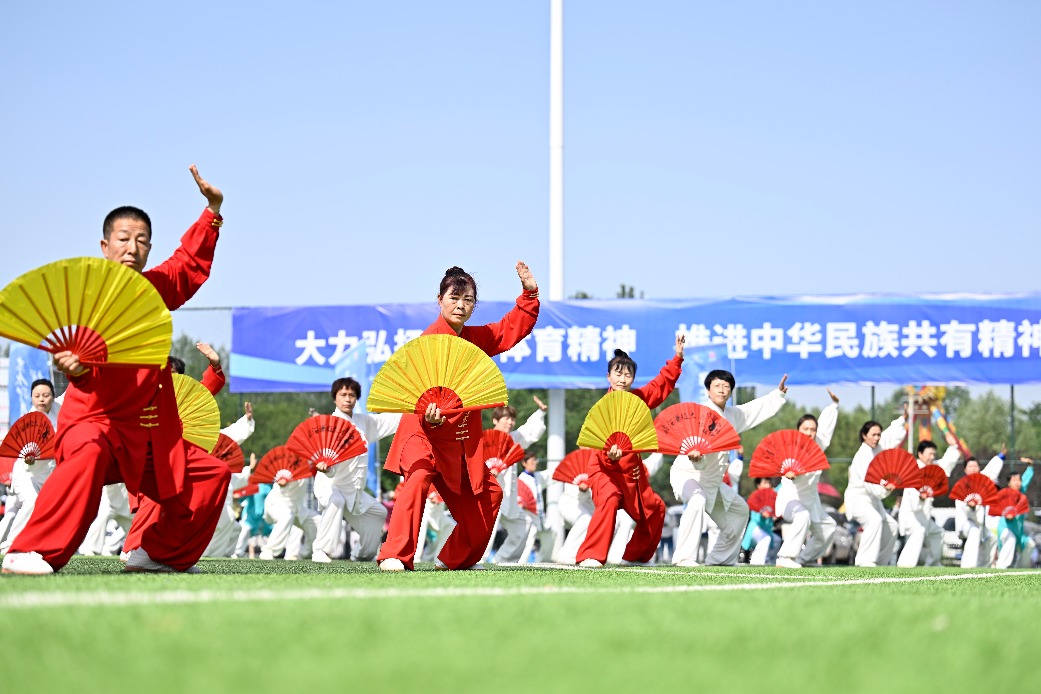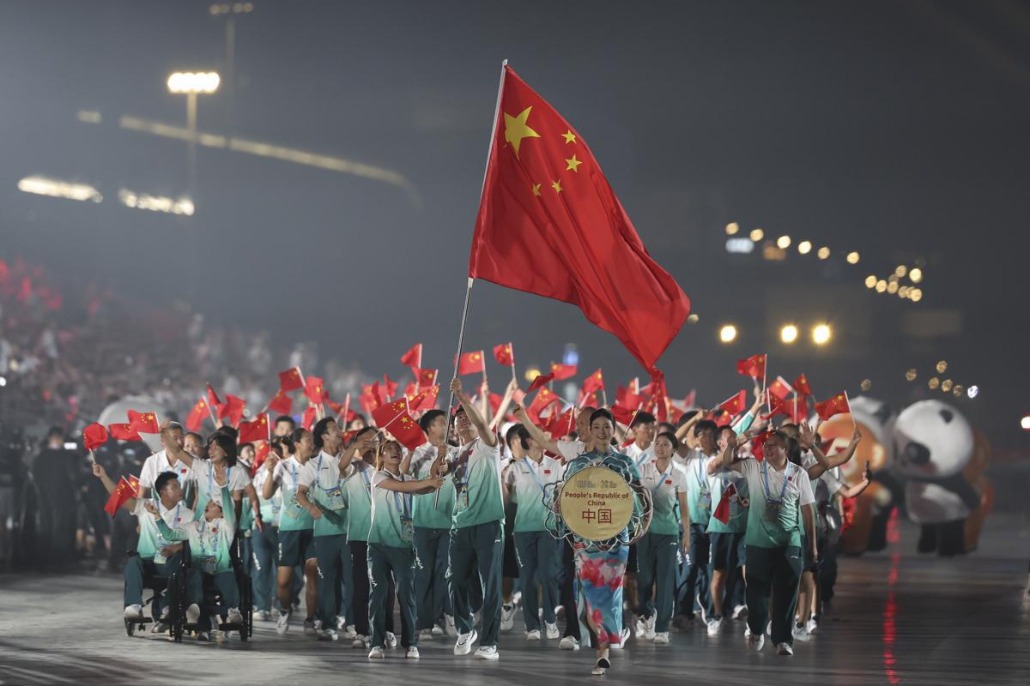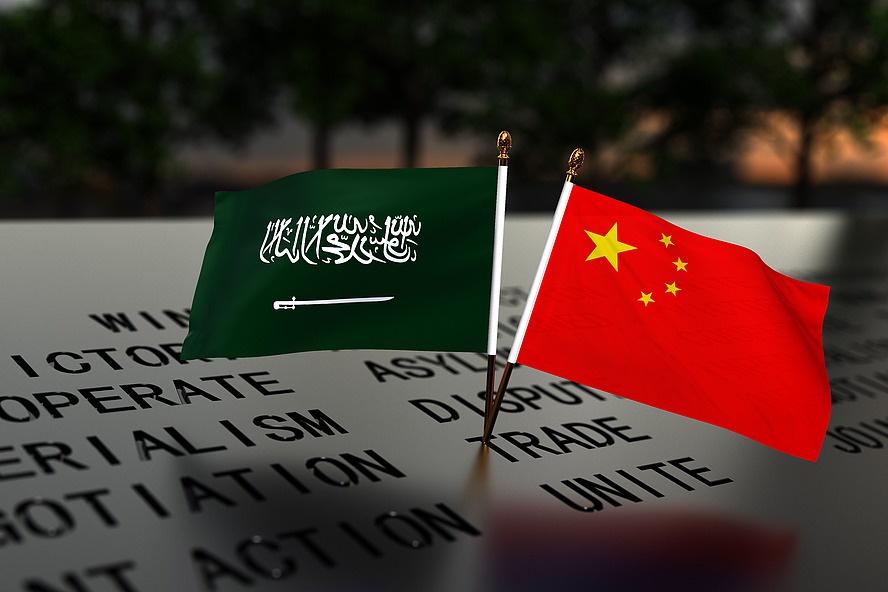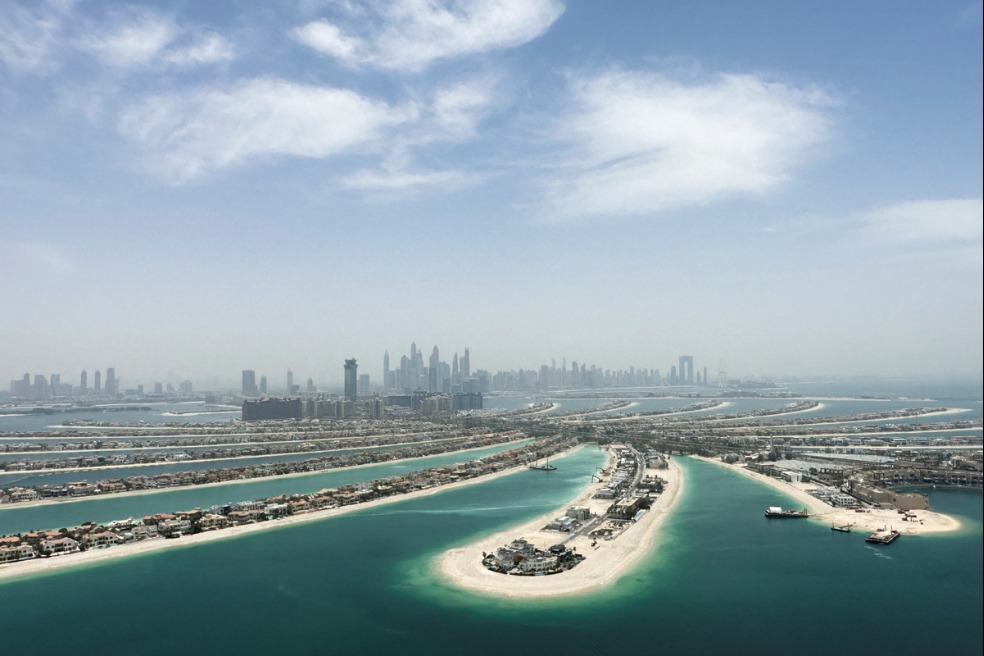Oxagon shaping the future of clean industrial development

In an era defined by industrial reinvention, two nations on opposite ends of the Asian continent are pursuing bold, future-focused visions. While distinct in origin, China's green development agenda and Saudi Arabia's Vision 2030 are laying parallel paths toward a more sustainable, technologically advanced global economy.

China's national strategic planning has placed environmental sustainability at the center of economic transformation, and its development agenda emphasizes a green, low-carbon transition and circular economy as key pillars of its future. By 2035, China aims to establish a fully integrated green economic system and promote sustainable lifestyles — steps critical to realizing the vision of Beautiful China.
Over 6,500 kilometers away, a similar vision is unfolding in Saudi Arabia. Since its launch in 2016, Saudi Arabia's Vision 2030 has charted a bold course toward economic diversification, aiming to reduce reliance on oil and position the Kingdom as a global hub for innovation, sustainability and advanced manufacturing.
The synergy between these two national agendas delivers tangible results. The increasing presence of Chinese electric vehicles in Saudi Arabia, for instance, is not only expanding consumer choice but also accelerating the Kingdom's transition toward a more sustainable economy. These examples reflect the broader potential of strategic alignment between China and Saudi Arabia.
Having lived and worked in China, and now at Oxagon — a floating city and a hub for clean and advanced industries in NEOM, a proving ground for the future of manufacturing in Saudi Arabia — I have witnessed firsthand the values these two countries share. Both are global leaders in their respective domains: Saudi Arabia in energy and China in technology and manufacturing. In an era where digitalization is transforming every industry, these strengths are deeply complementary.
The rapid expansion of data centers, smart infrastructure and emerging technologies such as blockchain and artificial intelligence all require the combined force of energy and innovation, and they are resources that Saudi Arabia and China both possess.
What is more encouraging is that both nations are driven by long-term vision, not short-term wins, and are united by the belief that today's decisions must benefit future generations. As this relationship evolves, it signals more than just a diplomatic or economic milestone; it represents the dawn of a new era in industrial collaboration, where Saudi Arabia and China are jointly shaping the future of the global industry.
A bilateral foundation of strong collaboration
As Saudi Arabia and China continue to advance their respective national visions, their bilateral partnership has grown into a cornerstone of industrial and economic development across the Middle East and Asia. This collaboration is increasingly characterized by long-term, strategic initiatives spanning infrastructure, energy, technology and advanced manufacturing.
A pivotal moment in this relationship came during President Xi Jinping's state visit to Riyadh in 2022, where a comprehensive strategic partnership was signed. The visit yielded agreements worth more than $30 billion across 35 sectors, including green energy, logistics, and digital infrastructure. That same year, bilateral trade between the two countries surged by over 33 percent, reaching $116 billion, demonstrating the momentum and depth of commercial engagement.
Since then, the pace of cooperation has only accelerated. At the China-Saudi Investment Conference in Beijing in December 2023, more than 60 memorandums of understanding were signed, with a combined contract value exceeding $25 billion. These agreements spanned strategic sectors such as energy, tourism, agriculture, healthcare and infrastructure, underscoring the breadth of the evolving economic relationship.
Institutional partnerships are also playing a vital role in delivering on this vision. Saudi Arabia's Public Investment Fund recently signed six MoUs with leading Chinese financial institutions, collectively worth $50 billion.
These milestones illustrate the scale, ambition, and diversification of China-Saudi economic ties. From capital markets and construction to energy and innovation, both countries are pushing the boundaries of global industrial collaboration. Their deepening relationship is now being brought to life through landmark initiatives such as NEOM and Oxagon, where shared ambition is translated into tangible, future-facing infrastructure.
As China deepens its engagement across Eurasia and Africa, Saudi Arabia stands out not only as a vital geopolitical partner but as a key player in the global energy transition. With its abundant solar irradiance and high wind potential, Saudi Arabia is uniquely positioned to become a global leader in renewable energy. Vision 2030 has placed energy diversification at the core of the Kingdom's economic transformation strategy, targeting large-scale deployment of renewables and aiming to become a major exporter of green hydrogen. Central to this ambition is the NEOM Green Hydrogen Company, a joint venture between ACWA Power, Air Products, and NEOM, which is building the world's largest green hydrogen plant powered by 4 GW of solar and wind energy — in Oxagon, the reimagined industrial city of NEOM. Located in Oxagon's Industrial Quarter on the Red Sea coast, the plant is expected to produce green ammonia by 2027 — positioning Saudi Arabia as a first mover in the global hydrogen economy.
These national goals are finding powerful alignment with China's parallel clean energy ambitions. China's strength in solar panel manufacturing, grid-scale renewables, and hydrogen technologies makes it a natural partner for the Kingdom. Recent investments underscore this synergy: China Energy Engineering Group Co Ltd's $972 million contract for a 2 GW solar park and multi-billion-dollar deals by JinkoSolar and TCL Zhonghuan for domestic solar cell manufacturing demonstrate deepening industrial collaboration. This partnership offers not just capital and technology, but a platform for long-term energy cooperation, innovation, and knowledge exchange — cementing Saudi Arabia and China as co-architects of a new, low-carbon energy future.
A case study in China-Saudi industrial innovation
Our bold vision at Oxagon is to develop an advanced green industrial ecosystem with clean technology and people at its core; one that reflects the shared ambitions of Saudi Arabia and China to drive a cleaner, more innovative industrial future.
What sets Oxagon apart is its greenfield advantage: designing an industrial city from the ground up to enable full integration of Industry 4.0 technologies and circular economy principles into its foundation. This creates an environment primed for breakthrough innovation, sustainable practices, and meaningful international collaboration — particularly between the Kingdom and China, where synergies in clean technology, industrial capability, and long-term vision are strongly aligned. Oxagon is also positioned to become an emerging hub for renewable energy manufacturing, supporting both local value creation and global supply chains. A leading example of this collaboration is Oxagon's partnership with Shanghai Zhenhua Heavy Industries Company Limited (ZPMC), one of the world's foremost manufacturers of cranes and large steel structures. ZPMC's advanced automation technologies are now powering the automation and capacity development of the Port of NEOM, Oxagon's first operational asset — demonstrating the potential of high-impact, cross-border technology transfer.
Strategically located along one of the world's busiest maritime corridors, Port of NEOM is an emerging gateway and next-generation logistics hub designed to enhance Saudi Arabia's global competitiveness and supply chain resilience. It is also being built to become one of the world's most sustainable and technologically advanced ports — leveraging low-impact construction materials, AI-driven efficiencies, renewable energy systems, and ambitious ESG and carbon neutrality standards beyond 2030.
Progress is already well underway. A key milestone was marked by the delivery of Saudi Arabia's first fully automated, remote-controlled cranes, engineered and supplied by ZPMC. These advanced systems, operated from secure ergonomic control stations, enhance both safety and efficiency, while supporting the port's long-term vision for full automation by 2028.
Oxagon's collaboration with ZPMC extends far beyond cranes and containers. It exemplifies the transformative potential of China–Saudi industrial cooperation by accelerating clean growth, creating high-value local jobs, and advancing Vision 2030's economic diversification goals.
The road ahead for China-Saudi industrial cooperation
As Saudi Arabia and China deepen their economic engagement, Oxagon stands as a testament to what strategic bilateral cooperation can achieve in the realm of sustainable industrial development. The Port of NEOM, powered by partnerships with China's ZPMC, demonstrates the potential of cross-border industrial collaboration to drive innovation, operational efficiency, and a new standard for environmental responsibility in future-focused cities.
Looking ahead, major developments like Oxagon highlight the potential for China and Saudi Arabia to set new global benchmarks in clean manufacturing and integrated planning.
As both nations pursue long-term visions centered on economic diversification and technological progress, the groundwork being established today offers a durable framework for collaboration — anchored in mutual priorities of clean growth, advanced technology, and at-scale impact.
The author is executive director of International Investments and Manufacturing, Oxagon. The views don't necessarily present those of China Daily.


































